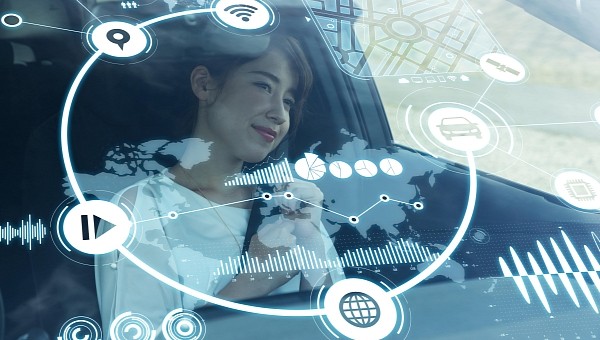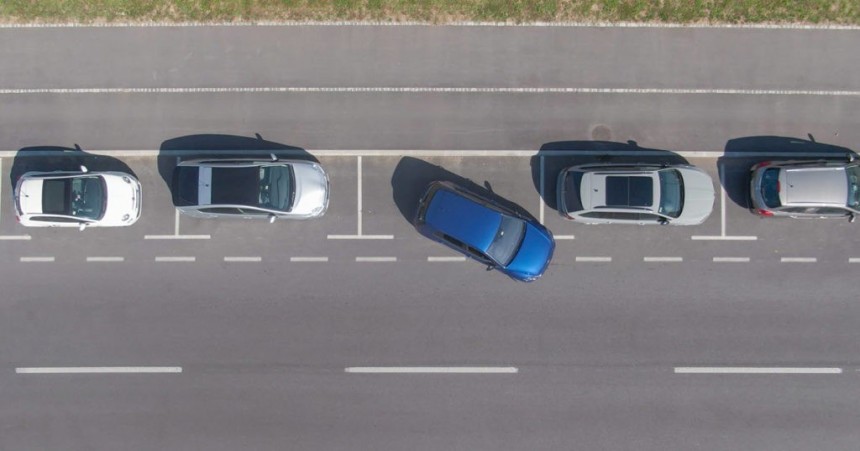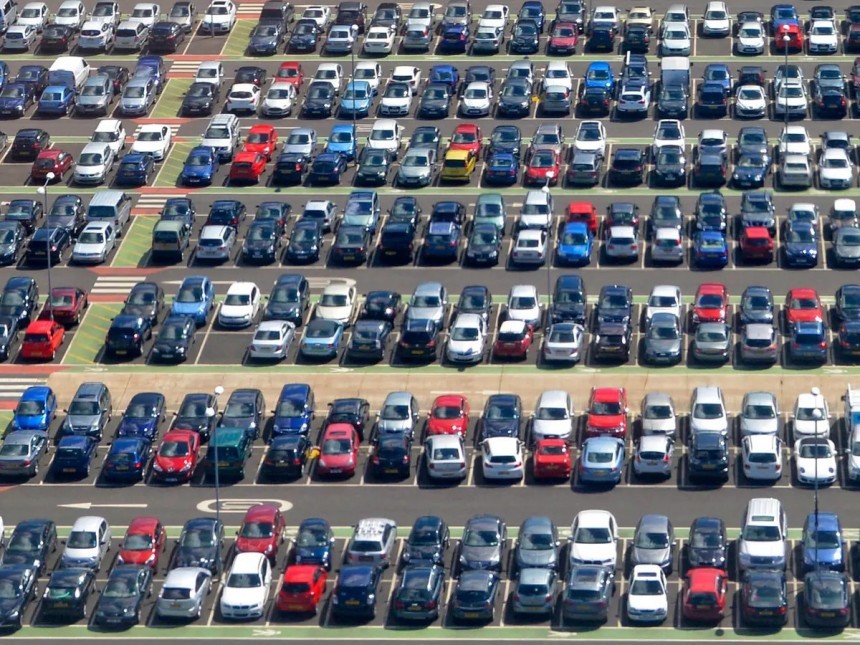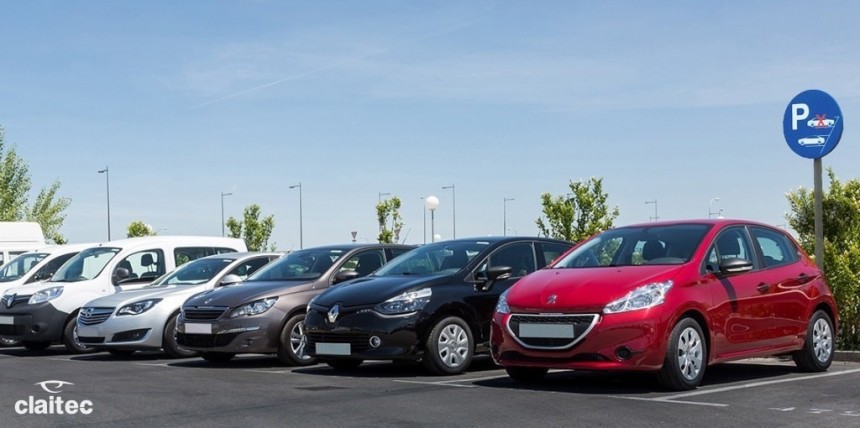There’s an increasing number of vehicles across the globe, which means more traffic in many parts of the world. Using popular apps like Google Maps and Waze, we can find our way through streets and try to avoid congestion as much as possible. But there’s another significant problem most of us have faced at least once when driving: finding a parking space.
Parking space availability has surpassed traffic information as the most crucial in-car feature for motorists across the globe, according to a recent survey carried out by TechInsights. This isn’t unusual - traffic apps have already become the norm, but people are looking to reduce the time spent searching for a spot to park their vehicles.
The results were reported via TechInsights’ latest Connected Features Interest Survey Report. It assessed 28 connected features and surveyed 4,990 drivers in the U.S., U.K., Italy, France, Germany, and China regarding their interest in each service to analyze demand.
The outcome varied slightly depending on the region. Still, three main desirable features stood out on a global level – assessing the availability of parking spaces near a destination, traffic alerts, and being able to pay for parking, fuel, and tolls directly from the car. Let’s see how the result differed for each country.
Chinese drivers ranked in-car parking information as the most valuable feature, while European drivers classed it as their second priority, but it was ranked just 1% behind their top-rated choice. Furthermore, American motorists placed the same feature at 67%, only 3% behind their top priority, traffic information. This isn’t surprising – most of the U.S. is built to make room for cars, so finding parking isn’t that difficult, at least when you compare it to European countries.
Drivers in Western Europe and China are becoming more and more concerned about whether they will be able to find parking at their destinations. Another insight the survey revealed was that drivers with larger vehicles have a high preference for reserving spaces at their destination. Moreover, drivers have growing expectations for parking to be integrated into the in-car navigation process.
Here’s my input as an Eastern European driver (in Romania, to be precise), as we weren’t included in the study – we’re encountering the same issues, and I bet we would’ve had similar answers to Western European motorists. This is a problem that spans most of Europe.
The survey also highlights an increase in the user of in-car payments, such as parking, fuel, tolls, and food, and how the functions became highly desirable. There’s a probability of 56% for the global respondents to choose the features, ranking 12% behind the top priority. Moreover, the demand surged across all age groups and technology engagements. As the technologies become easier to use and intuitive, drivers have more confidence using these services, especially since there’s no need for any physical contact.
It’s not just early adopters that desire in-car connected services in their vehicles – for instance, late adopters in Europe ranked services that help find a parking spot as a top priority, but so did the youngest drivers aged 18-24 years old.
The results are reflected similarly in the U.S., where 18-24-year-olds and 35-44-year-olds cited the same service as their top priority. What’s more, younger drivers ranked parking space information six places higher than alerts such as traffic.
Being part of the same young age category, I can definitely understand – we’re constantly getting bombarded with all sorts of notifications, from social media apps to weather, mail, and the list goes on and on. When driving, it’s easy to get distracted by them or, even worse, pick up the phone and heavily increase the risk of making an error. So, young drivers prefer to be automatically routed to their destination, where they can be sure about finding a parking spot.
The survey data from China revealed that young drivers now rate the ability to make in-car payments as “highly desirable” from the previous “nice-to-have” rating. The local market expects double-digit year-on-year growth for in-car payment services until the end of the decade. It shows that motorists have started to place more trust in making payments from their vehicles to make room for maximum convenience.
New features such as in-car games, email or social media integrations, and calendar management are generally seen as far less desirable than journey-related features. It makes sense – we already have those in our smartphones, so we want apps and services that make driving more convenient.
Automakers should consider these results when designing our future vehicles’ features. Regarding parking information, it’s not as easy as with traffic apps, where users provide their own input and help each other out. However, I’m sure there are solutions that can help drivers reduce the time spent on parking and, more importantly, reduce the stress they experience.
The results were reported via TechInsights’ latest Connected Features Interest Survey Report. It assessed 28 connected features and surveyed 4,990 drivers in the U.S., U.K., Italy, France, Germany, and China regarding their interest in each service to analyze demand.
The outcome varied slightly depending on the region. Still, three main desirable features stood out on a global level – assessing the availability of parking spaces near a destination, traffic alerts, and being able to pay for parking, fuel, and tolls directly from the car. Let’s see how the result differed for each country.
Chinese drivers ranked in-car parking information as the most valuable feature, while European drivers classed it as their second priority, but it was ranked just 1% behind their top-rated choice. Furthermore, American motorists placed the same feature at 67%, only 3% behind their top priority, traffic information. This isn’t surprising – most of the U.S. is built to make room for cars, so finding parking isn’t that difficult, at least when you compare it to European countries.
Here’s my input as an Eastern European driver (in Romania, to be precise), as we weren’t included in the study – we’re encountering the same issues, and I bet we would’ve had similar answers to Western European motorists. This is a problem that spans most of Europe.
The survey also highlights an increase in the user of in-car payments, such as parking, fuel, tolls, and food, and how the functions became highly desirable. There’s a probability of 56% for the global respondents to choose the features, ranking 12% behind the top priority. Moreover, the demand surged across all age groups and technology engagements. As the technologies become easier to use and intuitive, drivers have more confidence using these services, especially since there’s no need for any physical contact.
It’s not just early adopters that desire in-car connected services in their vehicles – for instance, late adopters in Europe ranked services that help find a parking spot as a top priority, but so did the youngest drivers aged 18-24 years old.
Being part of the same young age category, I can definitely understand – we’re constantly getting bombarded with all sorts of notifications, from social media apps to weather, mail, and the list goes on and on. When driving, it’s easy to get distracted by them or, even worse, pick up the phone and heavily increase the risk of making an error. So, young drivers prefer to be automatically routed to their destination, where they can be sure about finding a parking spot.
The survey data from China revealed that young drivers now rate the ability to make in-car payments as “highly desirable” from the previous “nice-to-have” rating. The local market expects double-digit year-on-year growth for in-car payment services until the end of the decade. It shows that motorists have started to place more trust in making payments from their vehicles to make room for maximum convenience.
New features such as in-car games, email or social media integrations, and calendar management are generally seen as far less desirable than journey-related features. It makes sense – we already have those in our smartphones, so we want apps and services that make driving more convenient.









